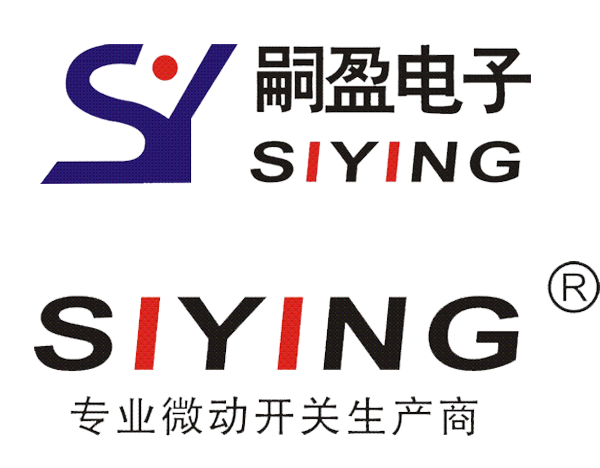
 Online consultation
Online consultation As audio enthusiasts, whether they are earphones or stereos, they will encounter plugs of many specifications when using wire. Here we will smooth out the common types of audio plugs for you.
1. 2.5mm / 3.5mm head
As the most commonly used earphone, its plug is divided into two standards: omtp standard is usually called national standard, and CTIA is called international standard. The difference between the two is that the GND and MIC of the last two sections of the plug are in reverse order. CTIA earphones are compatible with omtp devices. CTIA earphones inserted into the omtp device will cause low sound and distortion. Press the mic key to restore the sound. Thus, it can be identified whether it is the omtp standard or the CTIA standard through the following four segment diagram.
Omtp is a 3.5mm interface standard for earphones with MIC, which is commonly referred to as the national standard and used by the country. The pin connection method is (calculated from the small head): left channel - right channel - Microphone - ground wire (see the four segment model in version n).
There is also a 3.5mm earphone interface with MIC, which is an international standard, called CTIA. The pin connection method is: left channel - right channel - ground wire - microphone (see the four segment model in version I).
The one without microphone is a three-stage type. From right to left as shown in the figure, the left channel, the right channel and GND are grounded respectively.
2. 6.35mm head
Many enthusiasts also call it 6.3 plug, so the 6.3mm audio plug is also a 6.35mm audio plug.
The 6.35 plug can be regarded as an upgraded version of the 3.5 plug. Generally speaking, it is used in microphones, headphones, electronic instruments (such as electric guitar), keyboards, etc. It will be additionally divided into mono mono mono with only 2 metal sections and stereo stereo with 3 metal sections. The former is used for microphones and electronic instruments; The latter is used for purposes such as headphones. 6.3 plug can provide a more stable connection than 3.5 earphone plug, and is often used in broadcasting system, recording system, stage performance and other application scenarios. It is usually divided into gold plating and silver plating. Gold plating has strong conductivity and better transmission effect. Of course, silver plating has good conductivity.
3. RCA plug
RCA Jack (or RCA connector) is also called quincunx plug and AV terminal. Applications include analog video / audio (e.g. AV terminal (three color line)), digital audio (e.g. s/pdif) and color difference component (e.g. color difference terminal) transmission. Most of them are used for the transmission of sound signals between the signal source and the amplifier. One plug can only transmit one channel. Therefore, for example, 2 RCA lines need to be used to transmit left and right channel sound for 2.0 channel sound. This is also a deficiency of RCA. Whenever an independent signal is required, an independent cable is required. There are many cables. On the one hand, it is difficult to connect. In addition, after connecting the cables, the disordered cables also affect the appearance. At present, many TV and multimedia speakers also use RCA plugs as horn terminals, while coaxial lines in audio digital wires also use such plugs, but their impedance matching performance is generally poor.
When used as AV terminal, RCA plug is usually distinguished by color, yellow is used for composite video, and white (or black) is used as left channel and red as right channel in analog stereo sound. "Yellow, white and red" sockets almost all audio-visual equipment also have devices. At least one set of "yellow, white and red" sockets shall be provided on the TV to connect the camera (through the 3.5 mm Mini TRS terminal to the three RCA terminals, also known as "mini RCA"), the digital camera and the home game console. Although almost all audio-visual terminals, including audio, composite and color difference video, and SPDIF digital audio, can use wires with a characteristic impedance value of 75 ohms, some wires for special purposes in the market will have higher resistance values.
4、XLR
It is also called XLR balanced terminal, which is often called "cannon head" (the inventor is James h.cannon). The plug originally called cannon X was later added with a latch design, so an "L" was added to the "X", a rubber was added, and an "R" was added behind it, becoming the familiar "XLR" nowadays.
XLR usually has three pins, one is the positive line, the other is the ground line, and the other is the negative line. When both positive and negative signal lines receive the same noise, one is positive and the other is negative, which cancels each other. In this way, it can effectively eliminate the noise generated in the transmission of all positive and negative current. The common XLR plugs are pins. Of course, there are also pins, pins, pins, and pins. For example, four core XLR balanced connectors can be seen on some high-end headphone cables. The XLR interface, like the "big three core" TRS interface, can be used to transmit audio balance signals. The XLR wire usually looks thicker, and the wire core is also designed for balanced circuit. The transmission bandwidth is higher, which is more suitable for long-distance complete transmission of audio. Of course, the XLR interface, like the "big three core" TRS interface, can transmit unbalanced signals. However, from the perspective of the interface, we can't see what kind of signals it transmits.
5. Passive horn plug
There are three kinds of common passive HORN PLUGS: banana, wave and Y-type plug. These three plugs have the same characteristics and transmission function, and are different in shape, fixing mode and sound performance. Unlike the above multi contact plugs, a horn plug can only conduct "one polarity (one of the positive and negative poles)", so "two" plugs must be used for one channel to complete transmission, which is more troublesome than RCA plugs. However, the horn plug has a large contact area and can accommodate coarser wires, which will be larger than the previous plugs in transmitting signal energy. It is particularly suitable for horn wires that like to emphasize signal energy.
Banana plug
The English name is banana plug. The name of this plug comes from its slightly bulging shape, which can form a very large contact area after insertion. This characteristic makes it be used preferentially in high-power output equipment to connect speakers and receivers / amplifiers. Sometimes you can see banana plugs divided into two groups, called "double banana plugs", but they can not be used on all equipment (especially speakers).
Wave plug
The wave plug is made of copper sheet with high hardness. The wave shape is cut at the cut-out where the copper sheet is pressed into a circular shape, so that the plug can maintain the elasticity of outward support, so that the plug can support itself in the socket and ensure that the plug will not loosen.
Y-type plug
Generally, for Y-type plug, firstly unscrew the knob on the horn base, then insert the gap of the plug into the horn terminal base from the unscrewed place, and then screw the knob back to clamp the horn plug so that the plug will not fall off.
Since both banana and wave plugs are directly inserted into the horn base, which belongs to straight-line contact, while the contact area of y-plug is small, and the connection with the horn terminal is in right angle contact, so theoretically, y-plug is inferior to banana plug and wave plug in sound dynamics and high and low frequency extension.
Disclaimer: This article is from the creator of Tencent News client and does not represent the views and positions of Tencent.

 Online consultation
Online consultation
 0577-62395666
0577-62395666